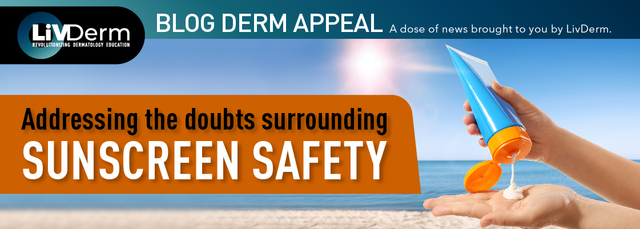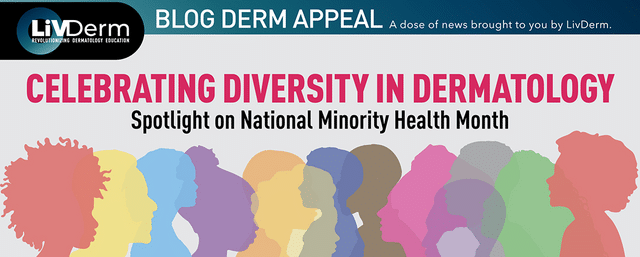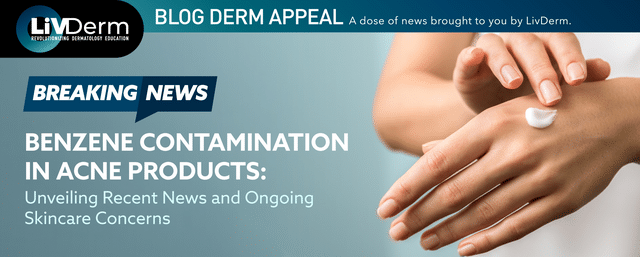May is Skin Cancer Awareness month, and efforts are being made across the board to educate and take proactive steps to prevent the most common type of cancer. With sun exposure being the primary cause of skin cancer, accounting for over 90% of cases, there is a need to highlight the dangers of ultraviolet (UV) exposure and the regular use of sunscreen to help protect the skin. This has, however, become increasingly challenging given recent posts on social media and other outlets that instead appear to be contradicting the medical evidence and research that supports the use of sunscreen.
Sunscreen: The recent controversy
A number of posts that recently surfaced on social media sites such as Facebook and Instagram claim that ‘sunscreen causes cancer, not the sun.’ This controversy was ignited after an urgent recall of several popular sunscreen brands in the U.S. last year. A report submitted by Valisure, a small, independent laboratory based in Connecticut that validates medications for quality and consistency, claimed benzene, a carcinogenic chemical, had been found in some sunscreen products. This news led consumers to question the safety of these products.
Reacting to this virtual commotion, public health authorities such as the U.S. Food and Drug Administration (FDA), clinicians, and experts are now attempting to reassure the public that sunscreens remain safe and the risks of not using sunscreen far outweigh the risk of using it.
Sunscreen for sun protection
According to the Skin Cancer Foundation, regular use of SPF 15 sunscreen can reduce the risk of squamous cell carcinoma (SCC) by 40% and lower the risk of melanoma by 50%. This is why for years, sunscreen has been used as one of the best means of protection against the harmful UV rays of the sun. These UV rays are invisible radiation that come from the sun (and tanning beds) and cause damage to skin cells. There are two types of UV rays, and it is important to protect against both. The longer wavelength of UVA rays cause tanning and premature aging, whilst shorter UVB rays cause sunburn. Additionally, these rays are reflected off surfaces like water, sand, cement, and snow, so protection is needed even on cooler, cloudy days.
The type of sunscreen used depends on skin type as well as personal preference. Physical sunscreens act as a shield, deflecting the sun’s rays. These typically contain the active ingredients zinc oxide and titanium dioxide. On the other hand, chemical sunscreens absorb the sun’s rays and may contain oxybenzone, avobenzone, octisalate, octocrylene, homosalate, and octinoxate.
Sunscreen and chemical absorption
In addition to the more recent benzene incident, past clinical trials revealed high plasma concentrations in commercial sunscreen products. Essentially, chemicals are absorbed into the body at a higher rate than was previously believed. Guidance from the FDA has recommended the assessment of human systemic absorption of the active ingredients found in some of these products. And although these chemicals are currently not generally regarded as safe and effective (GRASE), the FDA notes this does not mean that sunscreens are unsafe. In fact, they encourage people to continue applying sunscreen in conjunction with other protective measures as an effective means of sun protection. This statement has been supported by the American Academy of Dermatology (AAD), which recognizes sunscreen as an important tool in the fight against skin cancer.
Nevertheless, it is instances such as these that further exacerbate the benzene findings of last year. However, it is important to stress that the benzene controversy resulted from contamination during the manufacturing process and that benzene is not actually an ingredient of sunscreen. Dermatologist Christopher G. Bunick, MD, PhD, states that “not all sunscreens contain the contamination, and it’s important people understand it is still recommended and safe to use sunscreens that do not contain the benzene contamination.” Furthermore, during its announcement, Valisure added this message, “It is important to note that not all sunscreen products contain benzene and that uncontaminated products are available, should continue to be used, and are important for protecting against potentially harmful solar radiation.”
Key takeaway
The recurring message from health care providers and public health authorities is that not using sunscreen poses far more risk of skin cancer than using it. In fact, in a 2021 survey conducted by the AAD, it was revealed that although 80% of Americans know they should be applying sunscreen every two hours while outdoors, only 33% actually do. Of the 1000 adults surveyed, 30% apply sunscreen only to their face. Therefore, it remains key to continue promoting the proven health benefits of sunscreen as a means of providing effective prevention against skin cancer as well as educating on best sunscreen practices.
The AAD recommends a comprehensive sun protection plan that includes seeking shade, wearing protective clothing, and applying a broad-spectrum (protects from both UVA and UVB rays), water-resistant sunscreen with an SPF of 30 or higher. Consumers are always encouraged to read the labels, do their own research, and, if in doubt, speak to a health care provider about any concerns.
Sources:
- https://www.skincancer.org/skin-cancer-prevention/sun-protection/sunscreen/
- https://www.aad.org/public/everyday-care/sun-protection/shade-clothing-sunscreen/is-sunscreen-safe
- https://www.fda.gov/news-events/fda-voices/shedding-more-light-sunscreen-absorption
- https://healthfeedback.org/claimreview/current-evidence-doesnt-indicate-sunscreen-ingredients-increase-risk-of-cancer-unprotected-sun-exposure-does/
- https://practicaldermatology.com/news/fda-takes-steps-aimed-at-improving-quality-safety-and-efficacy-of-sunscreens?c4src=search:feed
- https://www.fda.gov/drugs/news-events-human-drugs/update-sunscreen-requirements-deemed-final-order-and-proposed-order
- https://www.dermatologytimes.com/view/physician-weighs-in-on-sunscreen-contamination-controversy
- https://www.fda.gov/drugs/understanding-over-counter-medicines/questions-and-answers-fda-posts-deemed-final-order-and-proposed-order-over-counter-sunscreen
- https://www.fda.gov/news-events/fda-brief/fda-brief-fda-announces-results-second-sunscreen-absorption-study#:~:text=%E2%80%9CResults%20from%20our%20study%20released,seeking%20further%20information%20indicate%20such.
- https://www.skincancer.org/skin-cancer-information/skin-cancer-facts/
- https://www.aad.org/news/aad-survey-shows-americans-need-sunscreen-education
- https://www.healio.com/news/primary-care/20190312/proposed-fda-sunscreen-rule-could-save-lives-reduce-confusion
- https://www.webmd.com/melanoma-skin-cancer/news/20210621/americans-falling-short-sunscreen-use
















